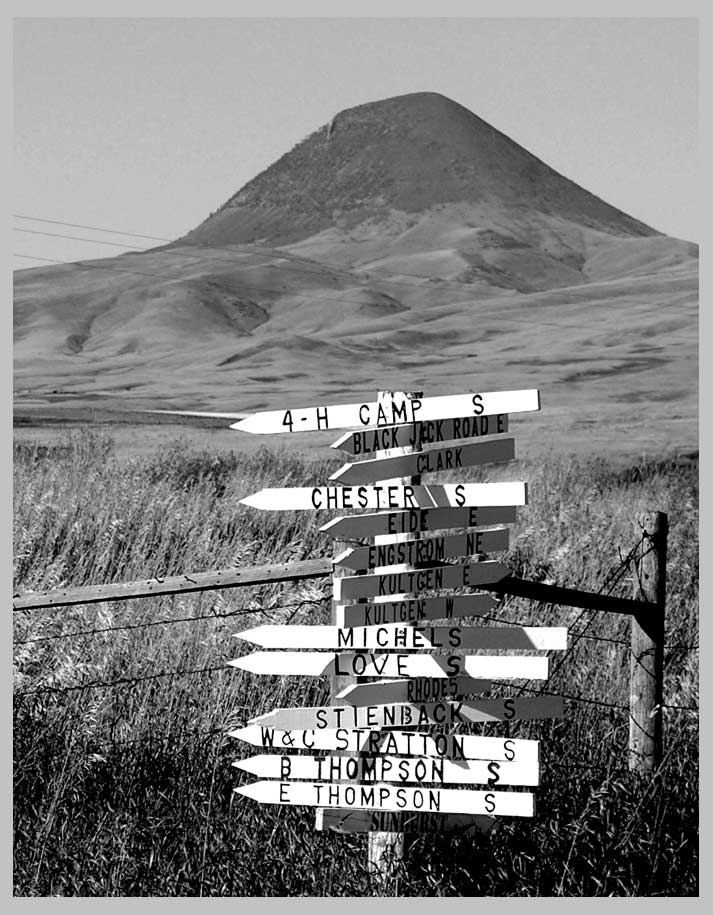
Which Way? Signpost near Whitlash, Montana—Sweet Grass Hills
On the road in the American / Canadian Northwest.

Which Way? Signpost near Whitlash, Montana—Sweet Grass Hills
On the road in the American / Canadian Northwest.
Finding One's Way . . .
Epistemology is the formal study of how we know:—How
we know the nature of the world, how to do things, how we
know our place in the Universe.
I think there is also a kind of natural history of how we know
what we know. The way to study this is quite simple: we
observe the world around us, say, through a lens, whether
that of a camera, a fieldglass, a microscope, or indirectly through
the lens of a TV or newspaper. This is essentially an outward
movement of intelligence. But if we are to better understand
how we know what we know, we must also, at the same time
and with great care that we remain neutral, look inward. I
think of the lens upon this inward world as a kind of daily
meditation practice. So the two movements, you might guess,
are complementary in the sense of mutual enrichment.
There is no limit to this movement of exploration. This is what
photography means to me; it is always a lens looking in both
directions. That is why what we think of Nature Photography
is always much more than just landscape and composition.
It is also deeply ethical in that it asks the perennial question
of how I, how we are related to what we see. And it is, for me,
spiritual—a spiritual journey, into both the landscapes of inner
and outer worlds, both known and unknown.
As a closing thought here, epistemology most certainly meets
natural history in our species in the soles of our feet. The
natural way—especially the natural rhythm of time and space
unfolding together—in my view is the pace and tempo of the
walker, the wanderer. Something to think about as we explore
the world. the current structural development and articulation
of North America is almost entirely an artifact of not walking
but of the nature and needs of the mode of movement of
mechanized cars. In a way it is so obvious. Once one dares
step outside of car culture, one sees almost immediately how
destructive this has been, both to the land and to our own
epistemological nature. What is worse is that this cannot
possibly be observed from within the point of the view of the
automobile. I think of this as a kind of devil's blind, a kind of self-
perpetuating, self-destructive process that owes its power to
the illusion of order and control it generates in the eyes of
those held hostage under its spell.
This is why my message to the young is simply walk. You
will be amazed at what this most primal of movements reveals,
what it has to teach us, both about ourselves and our relationship
to the land about us.